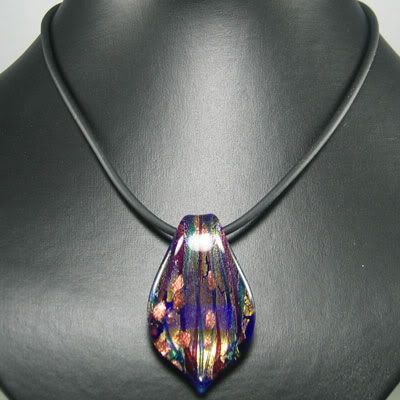Beautiful, elegant, colorful and unique, Murano glass pendants number among the most popular pieces of jewelry brought into existence on the Italian island of Murano, which is widely recognized as "the home of glassmaking".
According to ancient chronicles, the craft of Murano glassmaking began at the dawn of the 9th century and draws most of its influences from Asian and Muslim cultures. For instance, the technique of enameling is believed to have been introduced in Italy by the Syrians, while the Byzantines are credited with bringing in a collection of decorative methods of their own soon after the fall of Constantinople.
As Italian glassmaking grew, the Venetian authorities became increasingly preoccupied with keeping the craft a local secret and ordered glassmakers to relocate their studios to the secluded Isle of Murano. Although deprived of many of their liberties, the exiled glass artisans were provided with everything they needed to polish their craft and develop new technologies of glassmaking. Through hard work, dedication and passion, the newly founded community of master glassmakers managed to surpass all expectations within decades, giving birth to innovative, unique, and stunningly beautiful Murano glass designs that became emblematic of Italy.
The array of techniques developed by Murano glassmakers over time includes enameling (which in Italian is called "smalto"), gold threading (or "aventurine"), multi layering (or "millefiori"), milk glass (or "lattimo"), and precious stone imitation glass. The recipe for creating Murano glass can vary greatly, depending on the effect desired by the artisan. By introducing additional chemical components into the basic mixture or by altering the quantities for the main constituents, glass artisans can achieve anything from perfectly clear to completely opaque glass, as well as a broad scope of colors and hues.
One of the most popular techniques employed to obtain jewelry items is millefiori. The first steps it involves are melting multiple pieces of colored glass and pouring them into a star shaped mold one after the other. As soon as the mixture in the mold attains the consistency of a paste, the artisan can begin shaping it into long cylinders called canes. Finally, when the glass canes cool off and solidify, they are sliced across to expose the star pattern inside, which looks like a cluster of differently colored flowers. This is what gives the technique its name – millefiori – which translates as "a thousand flowers".
Multicolored canes stand out as the basis for creating the famous Murano glass pendants and beads, as well as many other different pieces of jewelry. Just like back in the day, authentic Murano glass pendants are shaped entirely by hand, relying mostly on a laborious and time-consuming process called lampworking.
Some of the most popular Murano glass pendant designs obtained by lampworking are variations of "filigree", which involves integrating layers of gold or silver foil into the glass while the material is malleable. The resulting combination yields unique lighting and color effects, especially when using high purity, clear glass as the basic material for the pendants created this way.
Want to find out about Murano glass pendants? For more resources about http://murano-glass-store.complease review these links.
Source: http://groshanfabiola.articlealley.com

No comments:
Post a Comment